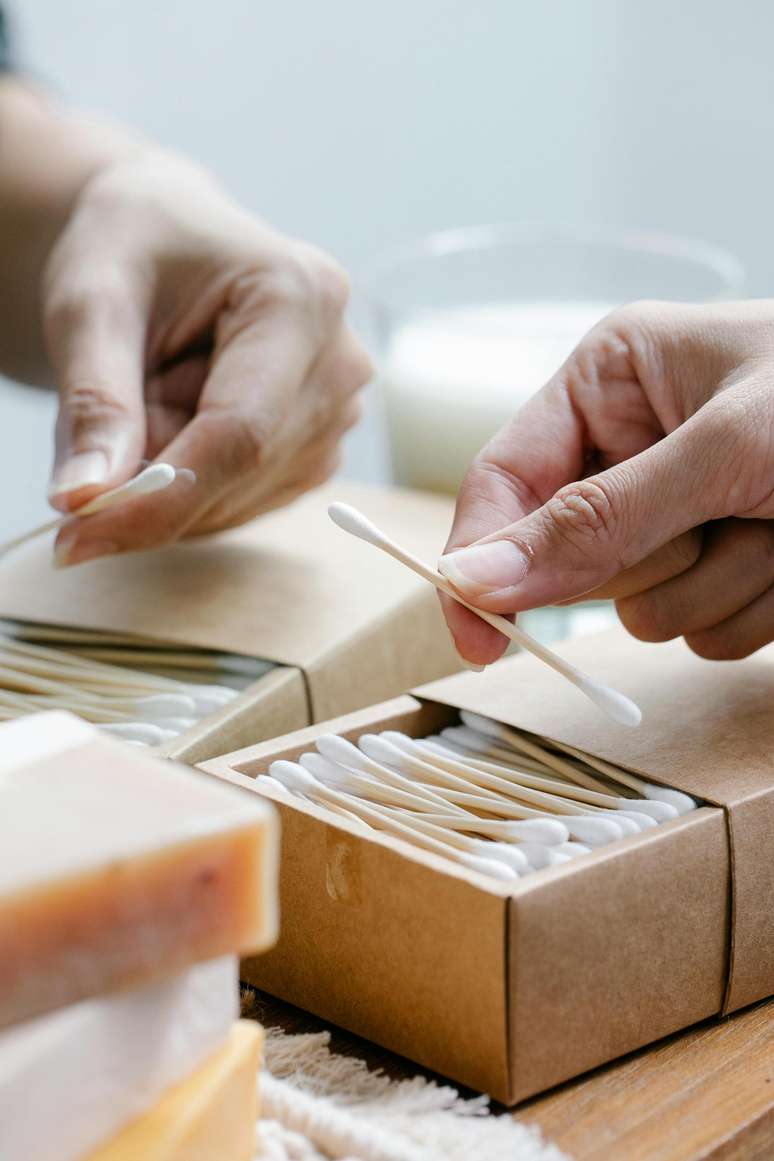Today is cotton swab day! Be careful though: the item can cause hearing loss and is not recommended for expert ear cleaning.
Despite being a common item in many homes and a symbol of hygiene, cotton swabs can pose a risk to your hearing health. On this June 25th, the date chosen to celebrate Cotton Swap Day, healthcare workers draw attention to taking care of personal hygiene, especially of the ears.
In an interview with Earth youotolaryngologist Gabriela Pilon Meira explains the risks that cotton swabs can pose to health and how ear hygiene should be carried out.
According to the expert, the cotton ball can actually pierce the eardrum, a thin membrane located in the middle ear and which plays an essential role in hearing. This perforation can be permanent or closed after trauma.
If the perforation persists, it is very common that conductive hearing loss remains and this ear cannot be wet when showering, at the beach or in the pool.
“Therefore, since it entails important negative consequences, the use of cotton swabs is not recommended in any situation,” highlights the specialist.

How to clean it then?
The otolaryngologist says that ear hygiene should be done with a towel only on the outside, on the ear. If a person experiences a blocked ear, he should seek medical help to clear it.
«For patients with a tendency to form earwax plugs, we consider a periodic visit to the ENT every 6 months, every 8 months or annually, it is important depending on the needs of each patient», concludes the specialist.

Was it cold? 15 “comfy” celebrity looks to inspire you and keep you warm
10 precautions when cleaning your ears
1. Avoid using cotton swabs
Do not insert cotton swabs or other sharp objects into the ear canal.
2. External cleaning only
Clean only the outside of your ear with a damp cloth or towel. Do not attempt to remove earwax from inside the ear canal.
3. Use specific solutions
Use ear drops recommended by healthcare professionals to soften and safely remove earwax.
4. Be careful with water
Prevent water from entering the ear canal while bathing or swimming. If necessary, use earplugs or a swimming cap.
5. Consult a professional
If you experience discomfort, pain, severe itching, or hearing loss, see an ENT doctor for an evaluation and professional cleaning.
6. Proper hygiene
Wash your hands before touching your ears to avoid infection.
7. Correct drying
After washing your face or swimming, dry your ears thoroughly with a towel, without inserting anything into the ear canal.
8. Regular monitoring
Get regular checkups with an ENT doctor to monitor the health of your ears and receive proper hygiene guidance.
9. Avoid irritating products
Do not use sprays or unknown solutions in your ear without your doctor’s advice, as they may cause irritation or damage.
10. Educate children
Teach children not to insert objects into their ears and monitor their hygiene to avoid accidents.
Source: Terra
Ben Stock is a lifestyle journalist and author at Gossipify. He writes about topics such as health, wellness, travel, food and home decor. He provides practical advice and inspiration to improve well-being, keeps readers up to date with latest lifestyle news and trends, known for his engaging writing style, in-depth analysis and unique perspectives.








